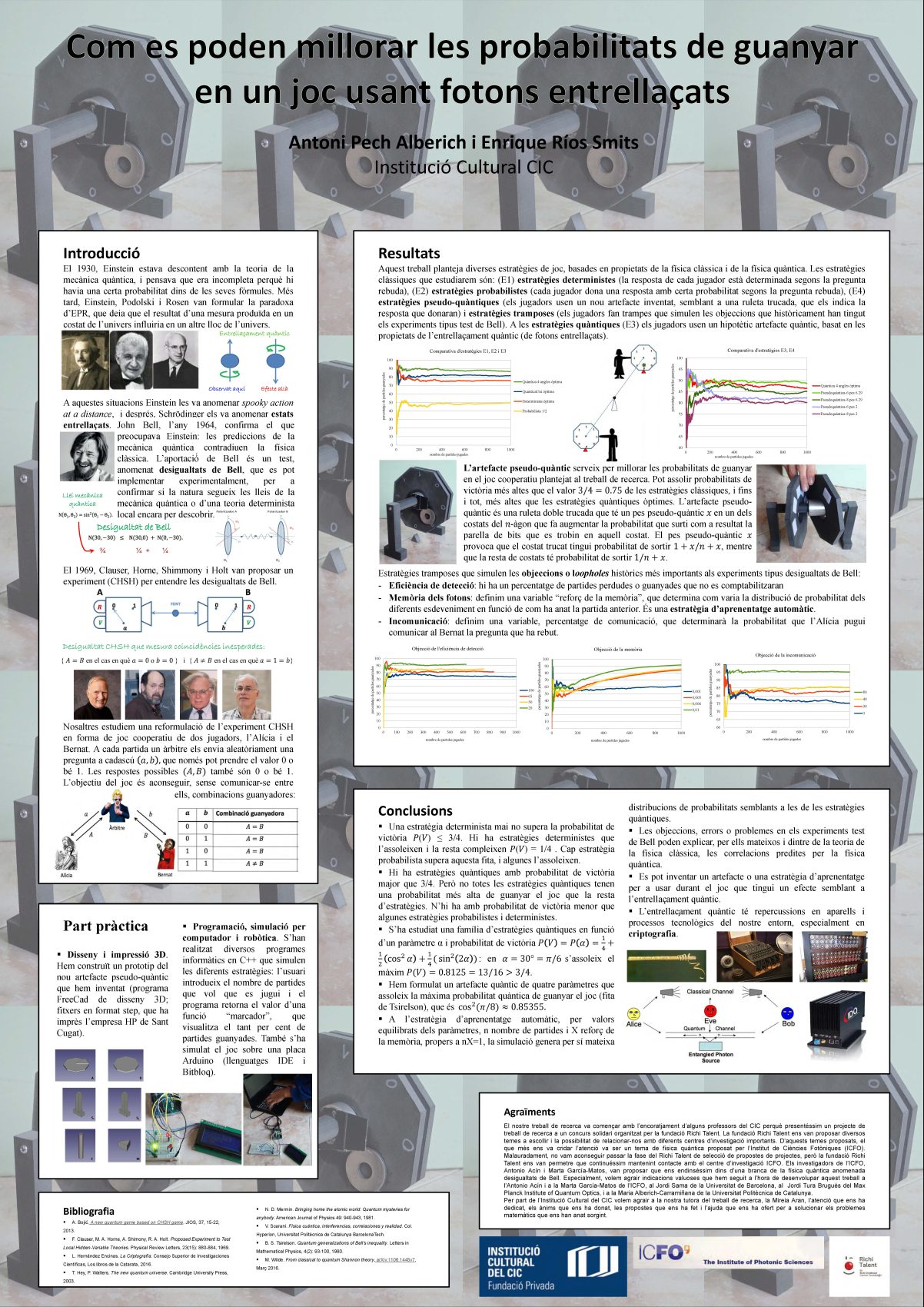Com es poden millorar les probabilitats de guanyar en un joc usant fotons entrellaçats
Antoni Pech Alberich,
Enrique Ríos Smits
Institució Cultural CIC – BaRCELONA
This research project investigates how the winning probabilities can increase in a cooperative game using entangled photons. The proposed game in this project is a reformulation of an experiment, know as CHSH in honour of Clauser, Horne, Shimony and Holt, the physicists who created it. This experiment explains a way in which we can measure quantum entanglement, based on Bell’s Inequality. Furthermore, this game is one of the best ways to illustrate the phenomenon of quantum entanglement. Bell’s experiments, which are based on Bell’s Inequalities, test the predictions of quantum mechanics and try to find out whether nature follows its rules. To sum up, our project’s aim is to find out why there are big controversies in classical physics and why they obtain a different result to quantum mechanics.
This project exposes some strategies for the game previously mentioned, which are based on the properties of classical physics and quantum physics. In quantum strategies, the players use an hypothetical quantum artefact, based on the properties of quantum physics. On the other hand, the classical physics strategies will be based on deterministic strategies (in which each player will answer in a determined way depending on the question asked), probabilistic strategies (in which the player’s answers will depend on probabilities), pseudo-quantum strategies (in which the players answer with an innovative quantum artefact) and also some strategies that will be based on loopholes originated from this experiment’s objections. A series of graphical and computerized simulations have been created in order to make an effective comparison between strategies.
The fact that makes this project stand out is the new pseudo-quantum artefact, whose special factor is increasing the probabilities of winning the game, in the same way the rest of quantum artefacts do.
Finally, some applications of Bell’s Inequalities in criptography will be shown.


